Soviet low-profile tank killer
The 9P149 "Shturm-S" became in 1979 the standard anti-tank AFV, fitted with a retractable launcher for 9M114 Kokon ATGM. The vehicle carried 12 missiles on board and entered service in 1979. This is basically a marriage of the MTLB chassis with the Shturm (AT-6) ATGM system. Variants such as the AT-6b and AT-6c can be launched from helicopters they exceeds the 1832-mm limit for the Shturm-S autoloader. Quite modular, this AT-6 ATGM launcher also combined with its autoloader is available for installation on fixed sites and boats as well. So far, it is not clear how many countries used it outside Russia. fas.org claimes nine, but it cannot be corroborated. All former socialst republic after 1990s had some in the inventory. The latter could have seen action in Chechnya and during the conflict in Donbass more recently. "Shturm" means "assault".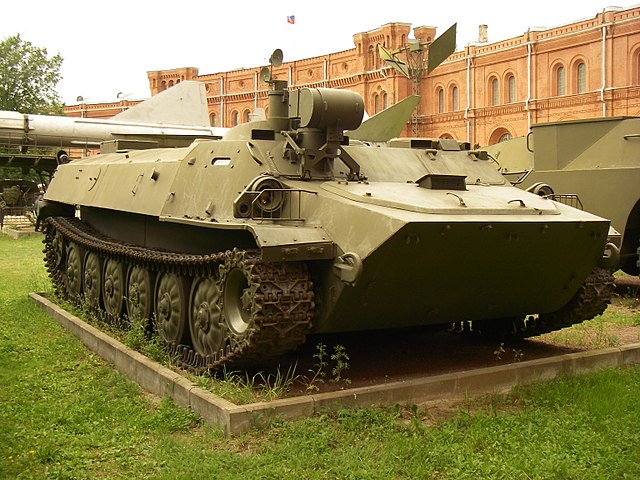
Development
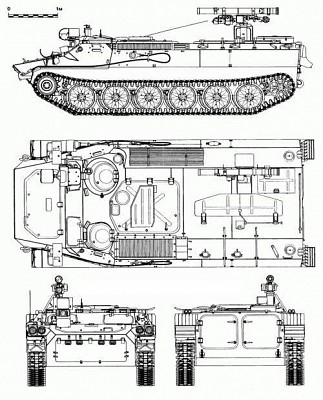 The available and sturdiness of the MT-LB tractor made it ideal for a large variety of conversion. The elongated chassis made for a very low vehicle, allowing to mounts weapons systems for an overall stull relatively low profile. The vehicle was especially well suited as a tank hunter, allowing an easy concealment while leaving only the optics and telescopic launcher emerge. Studies for such vehicle started when the 9K114 Shturm anti-tank missile was developed from 1967 to replace the 1st-gen 9M14 Malyutka. The missile was tested in 1970-1974, and eventually accepted into service in 1976. It was first deployed onboard Mil-Mi-24 "Hind" Helicopters but the idea of creating an autmated launcher for a ground vehicle was studied as well. Work started the same year, in 1976, and the platform chosen soon was obvious.
The available and sturdiness of the MT-LB tractor made it ideal for a large variety of conversion. The elongated chassis made for a very low vehicle, allowing to mounts weapons systems for an overall stull relatively low profile. The vehicle was especially well suited as a tank hunter, allowing an easy concealment while leaving only the optics and telescopic launcher emerge. Studies for such vehicle started when the 9K114 Shturm anti-tank missile was developed from 1967 to replace the 1st-gen 9M14 Malyutka. The missile was tested in 1970-1974, and eventually accepted into service in 1976. It was first deployed onboard Mil-Mi-24 "Hind" Helicopters but the idea of creating an autmated launcher for a ground vehicle was studied as well. Work started the same year, in 1976, and the platform chosen soon was obvious.
The MT-LB chassis made perfect sense. It did not came out from the blue but at the same time answered a query from the Soviet Army directorate for a supplement to the wheeled BRDM-2 based tank destroyer in service. The MT-LB proved more capable, being tracked and having a lower profile. It was equipped with a better weapons system, more able to defeat new Western tank such as the M1 Abrams and Leopard 2. Engineers worked on a way to create an autoloader for the launcher, that was telescopic and could be entirely folded down into a recess on the roof. Tests were performed in 1978, and after some modifications, the vehicle was accepted for service in 1979.
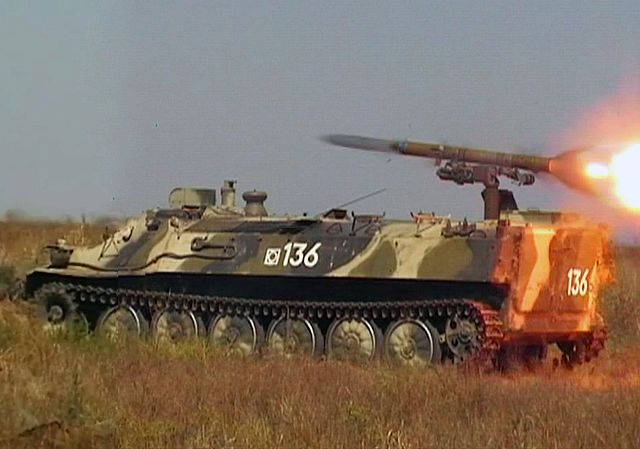
Design of the 9P149
Layout
The 9P149 was essentially an MT-LB. Not much changed were done to the vehicle, which was "stock", but the roof and aft compartment, usually used an an utility space or to carry 10 seated troops. The MT-LB is a low and angular tractor vehicle with its cabin at the front, wide enough for two, the driver and commander which sat on the other side, which was also the missile operator. The vehicle is protected by an overall 7 to 8 mm armor plating, with the frontal arc nose armor being thicker to resist heavy MG gun rounds, 0.55 in (14 mm). NBC collective protection system is provided, with internal spall lining and slight overpressure. The vehicle however lacks smoke grenade launchers for active concealement. Its best protection remains its low profile.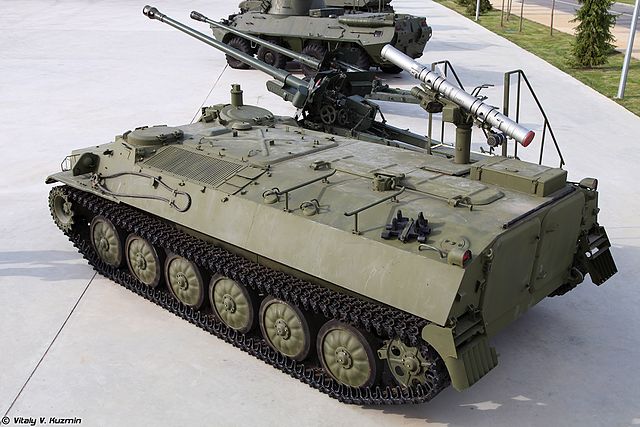
Top view of the vehicle, in Patriot park near Moskow.
The only armament, outside the crew's personal weapons, is the ATGM launcher, placed on the right aft side on the roof. The whole aft compartment has been modified and tailored to both reload and deploy the arm on which the launcher tube is fitted. This is a retractable launcher with automated reloading, using barillet system. There are 12 missiles in store, plus one 1 ready to launch in the tube. Its elevation range from -2 to +15°, with powered Traverse of -85 to +85°. It's a broad arc of fire but in case an anemy is spotted behind, the vehicle needs to back down and turn to face the threat. It should be noted that 12 missiles is not a lot, but the space allocated to the system is barely sufficient for more, as including the mechanism/maintenance room inside the compartment, accessible from the back doors.
In that case the operator is the commander, which operates the missile bu using the front-mounted sight, just forward of his hatch. It contains a SACLOS targeting and HD camera system with magnification in order to track the course of the missile up to 6 km (for the M version). The vehicle is also fitted with a R-123M or R-173 radio sets, one used for the guidance datalink relay. The reloading process is done by hand, by the crew acting as operators far from the battleline, when support vehicles were present. They just load the barillet inside the compartment, located in front of the launcher, closed by an oblong roof hatch. The barillet is turned for each reload.
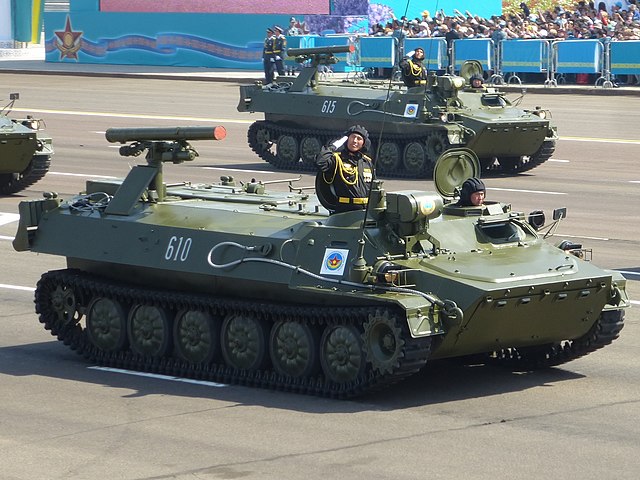
9P149 in a parade
Mobility
The MT-LB wheeltrain is of a flat-track suspension type, consisting of six road stamped steel, rubber-rimmed roadwheels per side, plus front sprockets, rear idlers, on torsion bars. There are indeed no return rollers. In some cased, the tracks can be swapped fromextra-wide models, 565 mm versus 350 mm and "aggressive" type grouser for the best possible grip on snow and mud, or any impassable ground (MT-LBV). This version indeed has a ground pressure lowered from 0.46 to only 0.28 kg/cm2. The 9P149 uses normal tracks, but can be fitted with these model tracks in case. The tank hunter has good performance on very difficult terrain, well served by a sturdy YaMZ-238V V8 diesel engine, which provides an output of 290 hp (19.5 hp/t ratio), and high torque, as the vehicle was originally designed as a tractor. This diesel is coupled with a manual, 6 forward, 1 reverse gearbox. It allows for a top speed of 62 to 65 km/h, and the vehicle is also fully amphibious and can swim at 9 kph. Range, thanks to a 450 liters tank, is about 500 km at cruise speed on flat. For tactical air deployment, it can only be carried by the largest transport planes in the Russian inventory. The Ground clearance is low too, onky 0.4 m, but the vehicle can pass a wall 0.6 m high, a trench 2.4 m wide, climb a gradient up to 60 % and negociate a slope at 30 %.Armament: The 9M114 ATGM
The 9M114 Kokon also called by NATO AT-6a/SPIRAL is Weighting 46.5 kg in tube. Its Warhead Type is a Shaped Charge (HEAT), with an estimated armor Penetration of 750 mm, and 600 mm behind ERA. Its Minimum and Maximum Range are respectively comprised between 400 m and 5,000 m, with a first hit probability of 90%. The average velocity is 345 m/second, with a maximal time of Flight at Max Range of 14.5 seconds.The 9P149 uses an high velocity radio frequency to guided the 9M114 Shturm missile and allows to disable most modern tanks. Its rate of fire is 2 to 4 rounds per minute, so in about 50 min. all 12 missiles carried can be fired before the vehicle needs to retire. There are limitations in this system: The 9P149 cannot fire on the move as there is no stabilized sighting system (SACLOS), and night fire capability is unknow, if possible. Also outside the weak protection of the vehicle itself and lack of smoke dischargers, there is no secondary armament for self-defense.
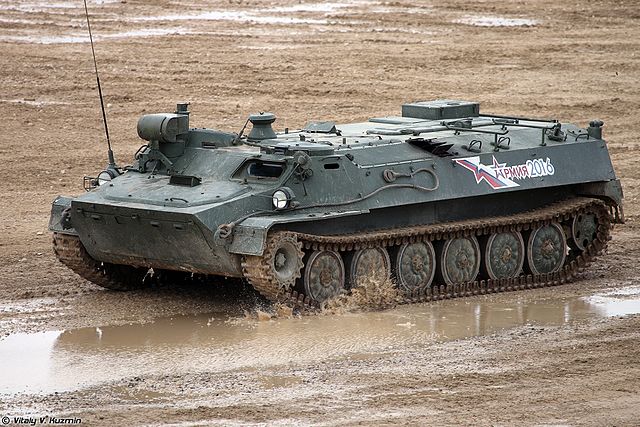
9P149 combat vehicle with 9K114 Shturm-S in parade, by vitaly kuzmin (cc)
9P149M, the modernized Russian variant
The system was adapted to launch the 9M120 Ataka; This new missile was tested and the reload system, sights and associated sub-sustems were all modernized, giving birth to the 9P149M. NATO reporting name for this missile is is AT-9 Spiral. The Ataka weights 48.3 in tube, uses a more modern Tandem Shaped Charge (HEAT) warhead, which has a greater armor Penetration of 950mm and 800mm behind ERA. Its maximal range is also better at 6,000 m with the same first hit probability of 90%. The average velocity is also superior, at 400 m/sec. (or 1440 kph/2317 mph), with a slightly better flying time of 15 seconds at max range. Other Missile Types that could be adapted to the launcher atre the AT-6 HE thermobaric and the AT-9 HE thermobaric ATGMs.The latest 9K132 Shturm-SM upgraded self-propelled antitank missile system is able to fire a large variety of vectors: 9M114 guided round, 9M114F guided missile, 9M120 guided missile, 9M120F guided missile, 9M120F-1 guided missile, 9M120-1 antitank guided missile, 9M120-1F guided missile, 9M120-1F-1 guided missile, 9V868M mobile test station (to check CVs), SPTA kit (individual, group, and repair), 9F869 classroom simulator (to train 9P149M CV operators), 9M114PRAKT practice guided missile, 9M120PRAKT practice guided missile, 9M120-1PRAKT practice guided missile, 9M114MAKET, 9M120MAKET training dummies (size and weight mock-ups), 9M120UCHEBN. training missile, 9M114Razr. cut-out missile, 9M120Razr. cut-out missile, and 9M120F Razr. cut-out missile.
As explained on the builder's site, the 9P149M is equipped with a TV/TI control device and radio command datalink. The operational letter-coded frequency for the radio command datalink equipment is set by a switch before loading. The DUST (above LOS) flight mode parameters are set mechanically before launch using a control panel.
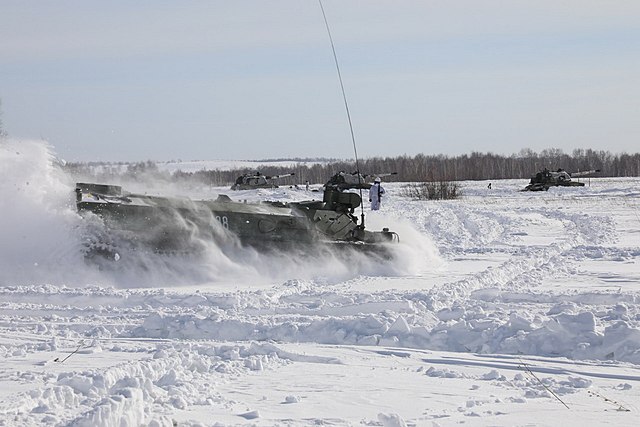
9P149 in an Artillery Exercise, winter 2020
9V868М mobile test station (MTS)
The The MTS is used to check 9P149/9P149M vehicles for function, and identify failures. It is able to replace units without disconnecting communication cables or dismantling the equipment under test. This system is also used to check the SPTA kit units, and measure control equipment parameters for adjustment and tuning, after replacement of any unit. The 9V868М is derived from a standard 9V868 MTS but with a 9V5002 test equipment to check the 9С4001 surveillance and targeting station (STS).The 9V868М MTS includes for service support a K131 van body, based on a ZIL-131N truck; It also included a power generation unit, rectifying unit and filter, drive checks device, 9V549 and 9V565, 9V5002 test equipments, 9V547.00.000 device for calculator checks and 9F716 missile simulator, 9V732 instrumentation equipmenr and a frequency meter, oscilloscope, voltmeter, megger, multi-purpose tester. The power generation unit was rated to 16 kV·A and 380 V for both the MTS equipment power take-off tests, engine cold. It could be fed by an external 380VAC±10 %, (50±1) Hz frequency system too.
The 9P149 Shturm in action
Combat records includes Afghanistan (for combat testings), and Chechnya in 2002, Donbass war in 2016.The 9P149 was in combat in Chechnya.
Exports
Form Soviet Republics: Azerbaidjan, Chechnya, Bielorussia, Ukraine, and Armenia.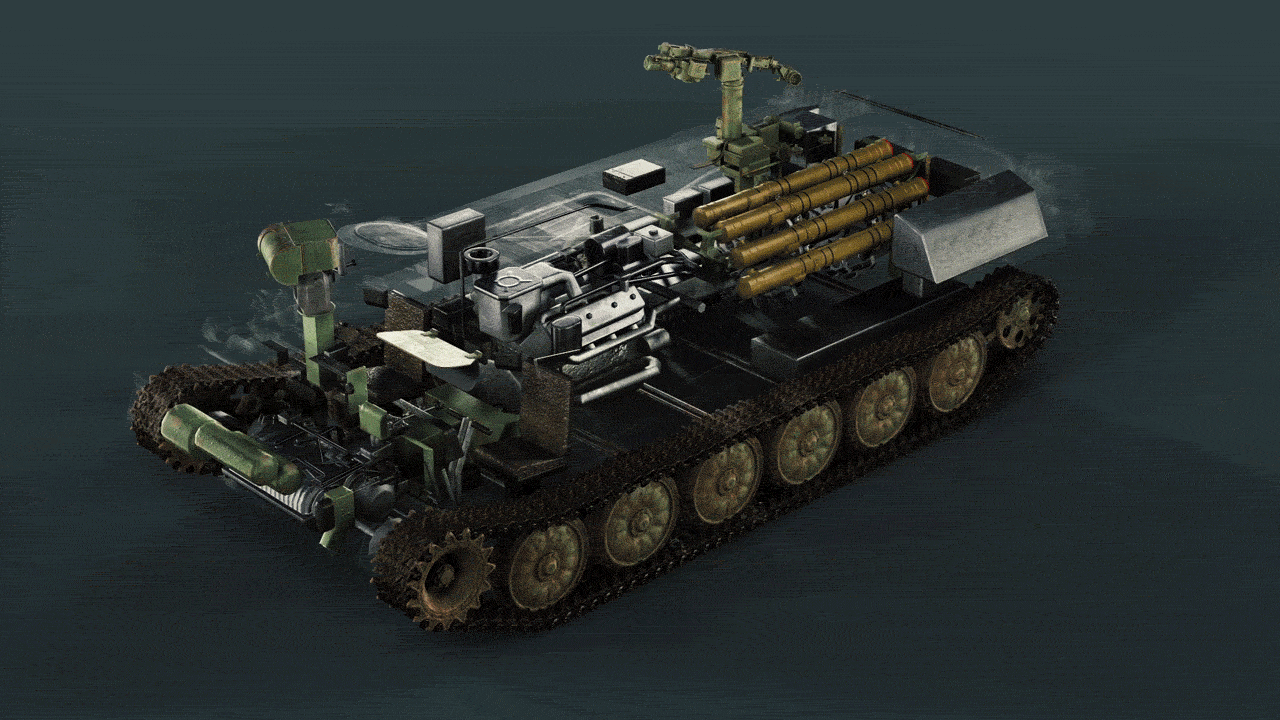
Links about the 9P149
The 9P149 on weaponsystems.netThe 9P149 on fas.org
The 9P149MS on kbm.ru
The 9P149 on missilery.info
The 9P149 on warthunder
The 9P149 on globalsecurity.org
The 9P149 on npovk.ru
Gusenichnaya Bronetankovaya Tekhnika: MT-LB & variants
The 9P149 on scalemates (model kit)
About the MT-LB
Vehicle's manual
2S7 Pion specifications | |
| Dimensions | 6.45 x 2.85 x 1.87m (with launcher up) |
| Total weight, battle ready | 12.3 tons combat ready |
| Crew | 2 (driver, commander) |
| Propulsion | 840 hp |
| Suspension | Torsion bars |
| Speed (road) | 50 km/h (31 mph) |
| Range | 650 km (400 mi) |
| Armament | See notes: 9M114 ATM |
| Armor | 14 mm frontal arc (0.5 in) |
| Total production | 500+ in 1979-1990 |

Basic Soviet Tractor MT-LB (1959), one of the most declined vehicle of the Soviet Army.

9P149 in parade livery

Other livery of the 9P149

9P149 with spare tubes

9P149 Shturm

9P149 Shturm SM

Russian 9P149M Shturm

Armenian 9P149
Gallery

Armenian vehicle, with an interesting camouflage
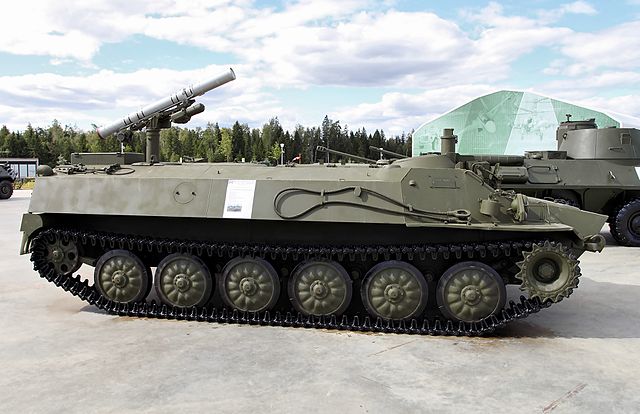
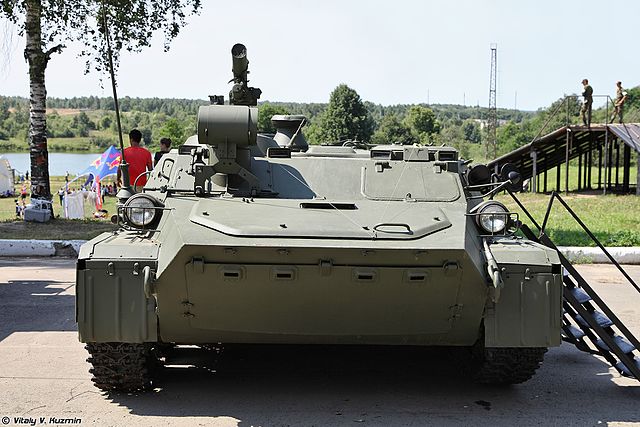
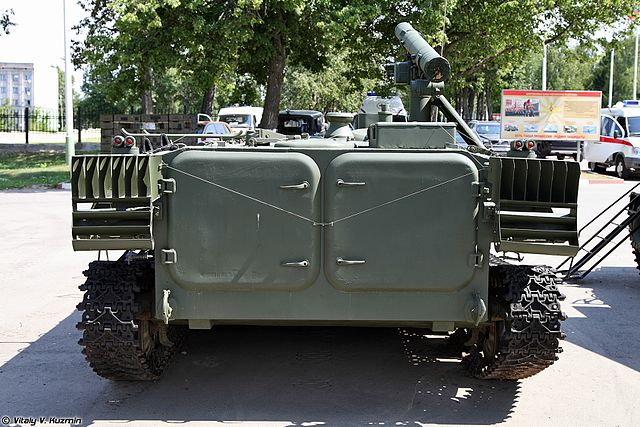
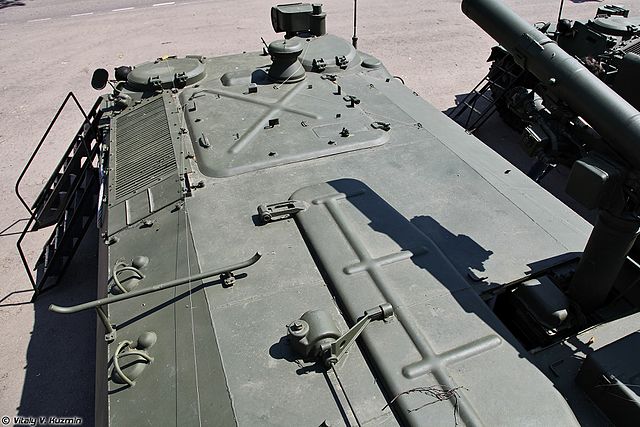
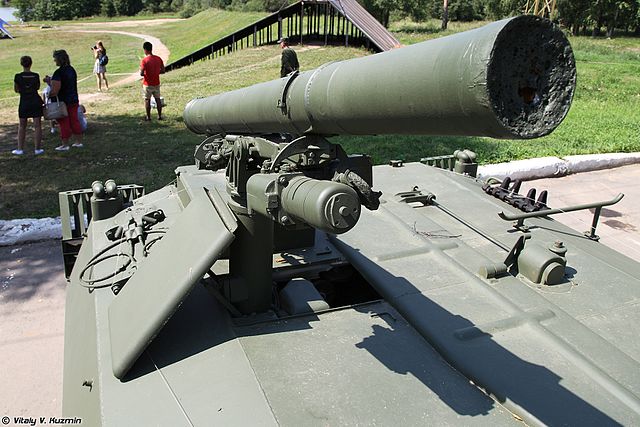
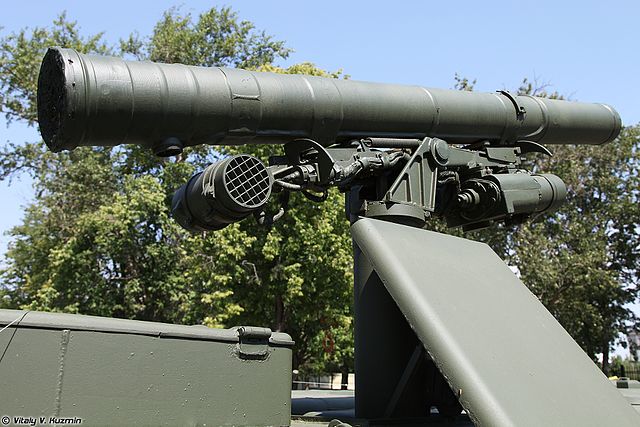
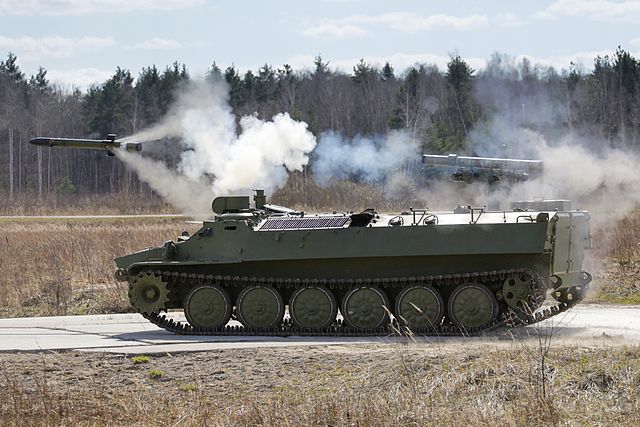
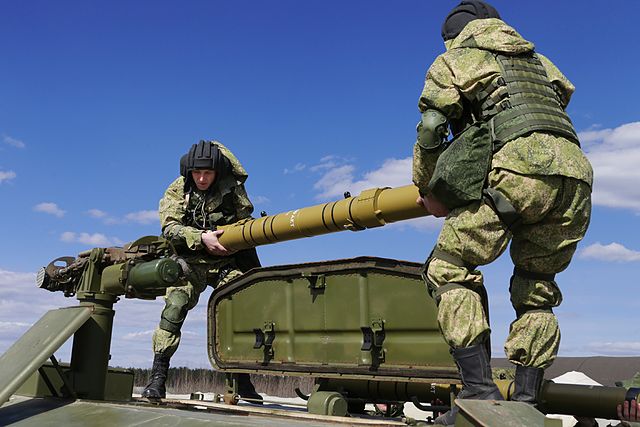
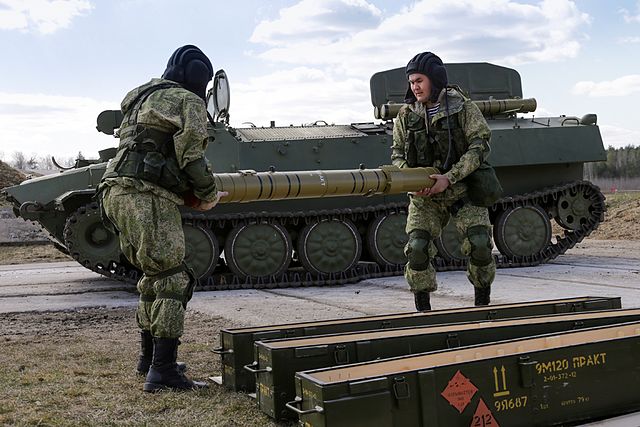

Cold War Tanks


































Cold war tanks posters

Cold War Main Battle Tanks

Cold War Soviet Army

